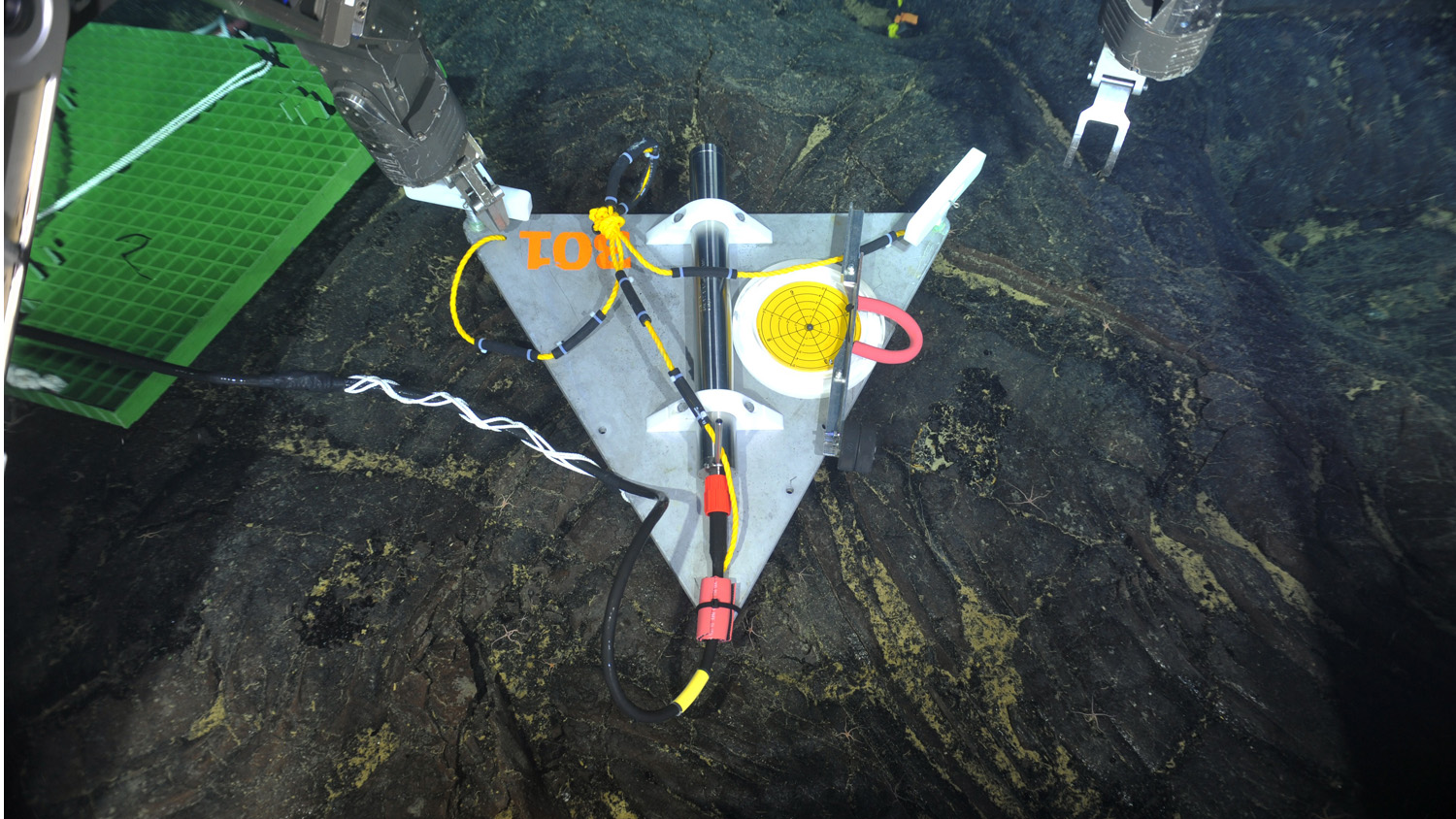Listening for Lava

NC State geophysicist Del Bohnenstiehl likes to listen to undersea soundscapes to better understand how they work. His latest project involves listening to underwater volcanic eruptions in order to confirm the presence of lava.
Eighty percent of volcanoes are under the ocean, which makes monitoring them difficult. However, a recently installed monitoring system on top of Axial Seamount, a submarine caldera located about a mile beneath the Pacific Ocean on the Juan de Fuca ocean ridge, is giving scientists an unprecedented opportunity to study submarine volcanoes in real time.
Calderas are volcanic craters, or depressions, formed at a volcano’s summit after a large eruption. Axial Seamount’s caldera measures about five miles wide by two miles across. It was a good candidate for study because it erupts fairly regularly and its magma chamber is shallow, which gives scientists a level of detail about the volcano’s internal structure that is difficult to get from volcanoes on land.
Normally, researchers utilize seismic monitoring to figure out when a volcano will erupt, looking for an increase in earthquake or tremor activity nearby that can indicate an eruption is imminent.
At Axial Seamount, the team also added a couple of hydrophones to the mix in order to measure underwater noise associated with the volcano. “Because the sounds we were looking for – of lava erupting – are sourced on the sea floor (as opposed to inside the earth, like an earthquake) they travel through the ocean water column as acoustic waves and are best detected on the hydrophones,” Bohnenstiehl says.
On April 24, 2015, the team managed to capture both seismic and acoustic data from an eruption. The acoustic signals began as soon as magma reached the seafloor, and were described as “explosive.”
The collected data gave the team a clearer picture of not only the physical geologic structure of Axial Seamount, but also of what is actually happening inside the caldera.
“The data are helpful to us for a number of reasons,” Bohnenstiehl says. “First, many active volcanoes around the world have calderas and much of what we learn here could inform our understanding of the how the systems work and what tools are best in terms of predicting eruptions.
“Additionally, the information may allow us to better predict the timing of the next eruption at Axial and potentially deploy additional resources to study the impact of such an event on the chemistry of hydrothermal systems as well as deep-sea biological communities.
“Finally, the acoustic explosions we detected give us a new tool to say definitely when and where there is active emplacement of lava on the seafloor. It gives us a way to monitor undersea volcanoes that may be hard to reach or to use other equipment on.”
The research appears in Science. William Wilcock, from the University of Washington, is lead author of the work.
This post was originally published in NC State News.